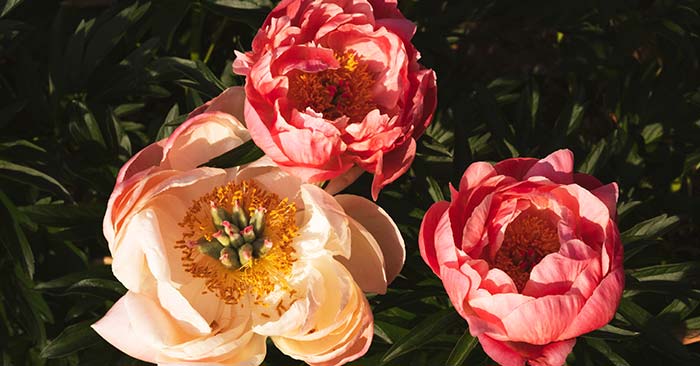Peonies Planting Depth: The Key to Blooming Success
When it comes to growing peonies, one of the most crucial factors that can determine the success of your garden is the planting depth. Many gardeners are perplexed by the question, “How deep should I plant peonies?” Planting peonies at the correct depth ensures they thrive and produce gorgeous, fragrant blooms. This comprehensive guide will delve into everything you need to know about peony planting depth, from understanding the basics to expert tips for achieving the best results.
Understanding the Basics: Why Planting Depth Matters
Peonies are known for their resilience and long lifespan. When properly cared for, they often bloom year after year for decades. However, improper planting depth can lead to poor blooming, weak plants, and even death. Planting peonies too deep or too shallow can disrupt their natural growth cycle.
Peonies have tuberous roots with buds (or “eyes”) that should be positioned right for optimal growth. The depth at which you plant these eyes can significantly influence the plant’s ability to establish and produce flowers.

Image Source: Envato Elements
Ideal Planting Depth for Different Peony Types
Herbaceous Peonies
Herbaceous peonies are the most common type, known for their lush, bushy growth and large, showy flowers. When planting herbaceous peonies, the ideal depth is crucial:
- Depth: The eyes of herbaceous peonies should be planted about 1 to 2 inches (2.5 to 5 cm) below the soil surface.
- Spacing: Space the peony roots about 3 feet (90 cm) apart to allow for adequate air circulation and room for growth.
Planting the eyes too deep can result in poor blooming while planting them too shallow can expose the roots to frost damage and hinder growth.
Tree Peonies
Tree peonies are woody shrubs that produce larger flowers and have a growth habit different from herbaceous peonies. The planting depth for tree peonies varies slightly:
- Depth: The graft union (where the tree peony is grafted onto the rootstock) should be planted about 4 to 6 inches (10 to 15 cm) below the soil surface.
- Spacing: Space tree peonies about 4 to 5 feet (120 to 150 cm) apart, as they require more room to spread out.
Tree peonies need to be planted deeper to protect the graft union from freezing temperatures and to encourage strong growth.
Intersectional (Itoh) Peonies
Intersectional peonies, also known as Itoh peonies, are hybrids between herbaceous and tree peonies. They combine the best traits of both types and have specific planting requirements:
- Depth: Plant the eyes of Itoh peonies about 1 to 2 inches (2.5 to 5 cm) below the soil surface, similar to herbaceous peonies.
- Spacing: Space the plants about 3 feet (90 cm) apart.
Itoh peonies benefit from the same planting depth as herbaceous peonies to ensure healthy growth and abundant blooms.
Steps to Plant Peonies at the Right Depth
Planting peonies correctly involves a few key steps to ensure they are positioned at the proper depth for optimal growth:
Step 1: Choose the Right Location
Peonies thrive in well-drained soil with full sun exposure. Choose a location that receives at least 6 to 8 hours of sunlight daily. Ensure the soil is rich and well-draining to prevent waterlogged conditions that can lead to root rot.
Step 2: Prepare the Soil
Prepare the planting area by digging a hole wide enough to accommodate the peony roots without crowding them. To improve fertility and drainage, amend the soil with compost or well-rotted manure.
Step 3: Position the Roots
Place the peony root in the hole with the eyes facing upwards. Ensure the eyes are positioned at the correct depth, as specified for the type of peony you are planting.
Step 4: Backfill and Water
Gently backfill the hole with soil, ensuring the eyes remain at the desired depth. Water the plant thoroughly to settle the soil around the roots and eliminate air pockets.
Step 5: Mulch and Care
Apply a layer of mulch around the base of the plant to help retain moisture and regulate soil temperature. Avoid covering the eyes with mulch, as this can affect blooming.
Common Mistakes to Avoid
Planting Too Deep
One of the most common mistakes gardeners make is planting peonies too deep. This can prevent the eyes from receiving the necessary light and warmth to sprout, resulting in poor growth and blooming.
Planting Too Shallow
Planting peonies too shallow can expose the eyes to frost damage, especially in colder climates. This can weaken the plant and reduce its ability to produce flowers.
Overcrowding
Peonies need adequate space to grow and thrive. Overcrowding can lead to poor air circulation, increasing the risk of fungal diseases. Ensure you space your peonies according to the recommended guidelines for each type.
Tips for Successful Peony Planting
Timing Matters
The best time to plant peonies is in the fall, typically from late September to early November. This allows the plants to establish their root systems before winter and be ready to grow in the spring.
Soil Testing
Conduct a soil test to determine your soil’s pH and nutrient levels. Peonies prefer slightly acidic to neutral soil with a pH of 6.0 to 7.0. Adjust the soil pH if necessary to create the ideal growing conditions.
Fertilization
Peonies benefit from a balanced fertilizer applied in early spring and again after blooming. Use a fertilizer with equal parts nitrogen, phosphorus, and potassium (e.g., 10-10-10) to promote healthy growth and abundant blooms.
Staking and Support
Herbaceous and intersectional peonies often produce large, heavy blooms that can cause the stems to bend or break. Use stakes or peony rings to provide support and keep the flowers upright.
Pruning and Maintenance
Regularly deadhead spent blooms to encourage continued flowering and prevent the plant from wasting energy on seed production. In the fall, cut back the foliage of herbaceous peonies to ground level to prevent disease.
Conclusion: Planting Peonies for Years of Beauty
Peonies are a timeless addition to any garden, offering stunning blooms and a sweet fragrance that can brighten up any space. By understanding the importance of planting depth and following the proper steps, you can ensure your peonies thrive and bloom year after year.
Remember, the key to successful peony planting lies in positioning the eyes at the correct depth, providing adequate space, and offering the necessary care and maintenance.
FAQs on Peonies Planting Depth
Q: How does the climate affect peony planting depth?
A: In colder climates, plant peonies slightly deeper (up to 3 inches) to protect the eyes from frost. Stick to the standard depth (1-2 inches) in warmer climates.
Q: Can I plant peonies in pots, and if so, how deep should I plant them?
A: Yes, you can plant peonies in pots. Ensure the eyes are 1-2 inches below the soil surface, and use a large pot with good drainage.
Q: What should I do if my peonies are not blooming after planting?
A: Check the planting depth. If the eyes are too deep, carefully replant them at the proper depth (1-2 inches below the soil).
Q: How can I tell if I planted my peonies too deep?
A: If your peonies produce lots of foliage but few or no flowers, they may be planted too deep. The eyes should be just 1-2 inches below the soil.
Q: Can I adjust the planting depth of established peonies?
A: In the fall, you can carefully dig up and replant peonies at the correct depth, ensuring the eyes are 1-2 inches below the soil.
Q: Do peonies planted at the wrong depth suffer from diseases?
A: Planting too deep can lead to root rot and fungal diseases due to poor air circulation. Proper depth ensures healthy growth and disease resistance.
Q: How deep should I plant peony seeds?
A: Peony seeds should be planted about 1/2 inch deep in well-draining soil. They require cold stratification to germinate successfully.
Q: Is it necessary to stake peonies regardless of planting depth?
A: Staking is not dependent on planting depth but is necessary for supporting heavy blooms, especially for herbaceous and intersectional peonies.
Q: Should I fertilize peonies differently based on planting depth?
A: Fertilization needs to remain consistent regardless of planting depth. Apply a balanced fertilizer in early spring and after blooming.
Q: Can mulching affect peony planting depth?
A: Mulching can help regulate soil temperature and moisture, but avoid covering the eyes. Keep mulch a few inches away from the plant base.
Q: What tools are best for planting peonies at the correct depth?
A: Use a garden trowel or spade to dig holes to the correct depth. A measuring tape or ruler can ensure the eyes are planted 1-2 inches deep.
Q: How does soil type impact peony planting depth?
A: Well-draining soil is crucial. Heavy clay soils may require raised beds or amended soil to ensure proper depth and prevent waterlogging.
Q: Can planting depth affect peony fragrance?
A: Planting depth does not directly affect fragrance, but proper depth ensures healthy growth and abundant blooms, enhancing overall plant quality.
Q: How long does it take for peonies to bloom after planting?
A: Peonies typically take 2-3 years to establish and bloom. Ensuring the correct planting depth helps them reach the blooming stage more effectively.
Q: Can I plant peonies at different depths in the same garden?
A: It’s best to plant all peonies at the recommended depth for uniform growth and blooming. Consistent depth helps with maintenance and care.
Q: How do I prepare the soil for the correct planting depth?
A: Loosen the soil to a depth of 12-18 inches, amend with compost, and ensure proper drainage before planting peonies at the correct depth.
Q: What happens if peonies are planted too deep in sandy soil?
A: Sandy soil drains quickly, so planting too deep may not cause as much harm, but it’s still best to stick to the 1-2 inch guideline for optimal growth.
Q: Are there different planting depths for different peony varieties within the same type?
A: Generally, all herbaceous peonies follow the 1-2 inch depth rule, but always check specific variety recommendations for best results.
Q: Does the age of the peony affect how deep it should be planted?
A: Age doesn’t affect planting depth. Whether planting a new root or relocating an older plant, the eyes should always be 1-2 inches below the soil.
Q: How does peony planting depth affect their longevity?
A: Correct planting depth ensures healthy root development and blooming, contributing to peonies’ long lifespans, often lasting decades.


